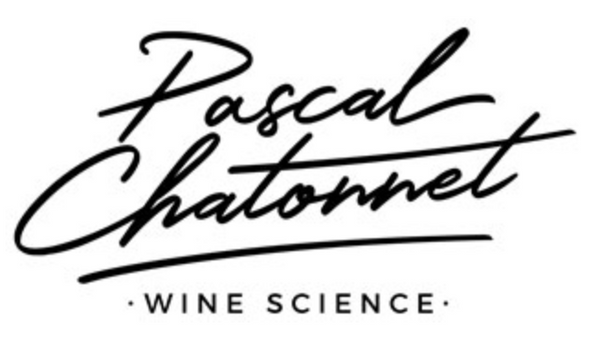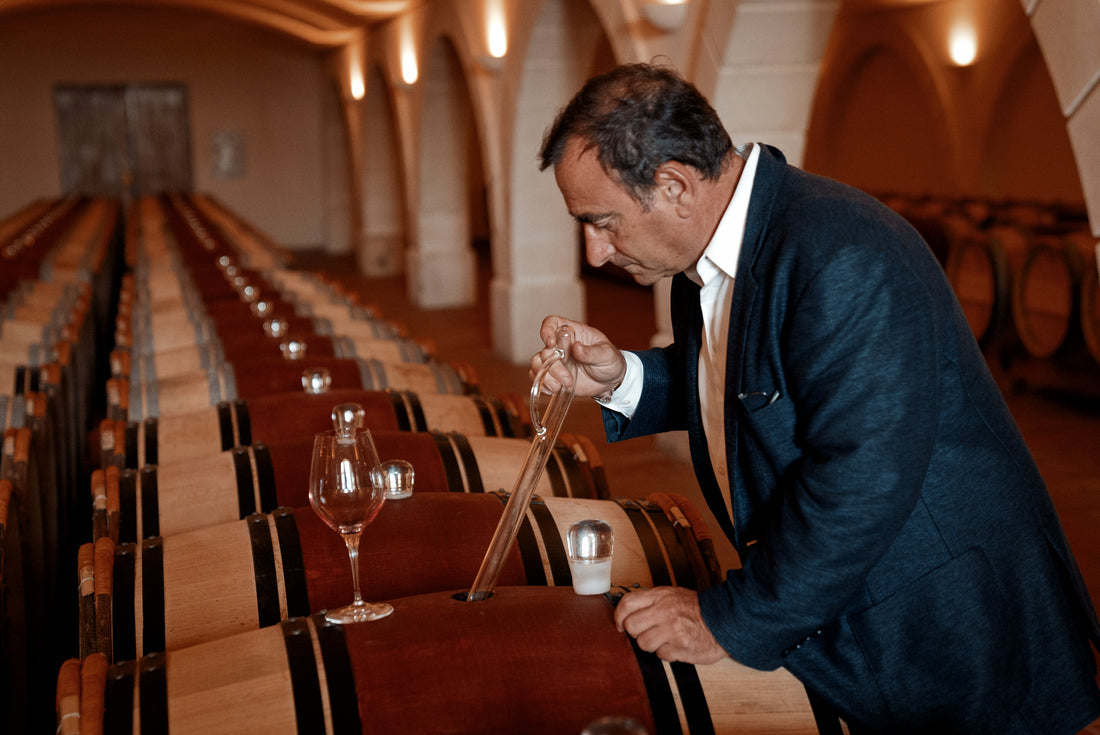Brettanomyces: Yesterday's Myths and Today's Realities
Means of curative control
This saga is divided into 6 articles Read the introduction, Ecology and Origin of Brettanomyces in wines, What are the factors and practices that influence the development of Brettanomyces in wines? and Means of preventive control against Brettanomyces
Brettanomyces is a yeast that has been known for a long time but has recently attracted a lot of attention. The latest fashionable subject, controversies, myths, miracle solutions are now legion and contribute to enormously complicating a serious problem but nonetheless not as complex as some would have us believe... The abundance of information of varying quality on this subject has rather detrimental to the management and solution of the Brettanomyces problem in red wines. The main objective of this article is to take stock of the key elements likely to significantly influence the development of microorganisms in wines and to identify practical and effective tools for controlling their development.
Physical treatments
The heat treatment of wine, also called “flash pasteurization”, is an effective technique for the destruction of all types of microorganisms. The treatment conditions must be adapted to the resistance characteristics of each person. The thermal destruction characteristics of Brettanomyces are known and depend on environmental conditions19. The decimal reduction time (DT) is 0.3 to 0.4 min at 55° regardless of the physiological state of the cell; the Z factor, which allows the DT to be reduced by 10, is 5°C. These parameters can also be applied to the thermal disinfection of barrels. Once treated, wine can easily become contaminated again. In addition, heating the wine for a few seconds followed by its cooling must be done perfectly away from air so as not to cause any harmful oxidation. This process is interesting for blocking rapid development in young wines, possibly sweet and difficult to filter.
Filtration is a classic technique for eliminating microorganisms. The quality of its result depends on the porosity of the filter media which must be adapted to the targeted microorganisms. In the case of Brettanomyces, especially if we are dealing with wines at the end of aging, the cells are small and require filtration with a cut-off threshold of less than 1 µm (and ideally less than 0.65 µm ) if we want to guarantee total elimination. It is ridiculous to think that filtration can negatively affect the quality of wine if it is well conducted and well prepared. If filtration at this level of porosity seriously affected the quality, it is because this quality was based, given their size, on very unstable elements... In fact, it is the clogging which is detrimental to the quality, it that is to say the filtration under pressure on a medium which is not very porous, which can eliminate elements positive for the organoleptic quality. To avoid negatively affecting the quality of the wines during their filtration, it is often essential to proceed in successive stages of filtration (3 then 1µm), to pre-filter, or to pre-treat enzymatically to avoid clogging the sterilizing medium and defleshing the flesh. wines 20,21. Taking into account turbidity alone does not really provide information on the filterability of a wine. Determining the clogging index22 can help adapt the wine preparation strategy[1]. Therefore, filtration is particularly recommended before bottling when the wine presents a certain risk profile or a population of Brettanomyces has been detected during the pre-draw check (see below).
Other physical treatments have been considered and tested. UV sterilization (UV-A germicidal) is not really suitable for the treatment of red wines due to the strong absorption of ultraviolet radiation by the polyphenols present and the photo-induction of oxidizing radicals. High-pressure treatment (destruction of cells above 200 MPa) is certainly effective but extremely expensive without offering sufficient flow rates (batch treatment). Treatment by electroporation (perforation of cell membranes under the effect of a potential difference applied in a continuous treatment cell) also has a certain effectiveness23, but again the little equipment available, the treatment flow rates and the risk of overheating considerably limit, in my opinion, the practical interest of this technology for the moment.
Use of Chitosan
Chitosan is a natural polymer of N-acetylglucosamine, derived from chemically or enzymatically deacetylated chitin. Chitin is found in particular in the shells of crustaceans, cephalopods, insects and in the walls of filamentous fungi. Chitin processing produces chitosan. This polymer must have a very specific degree of de-acetylation to be effective against Brettanomyces/Dekkera; the degree of deacetylation also influences the solubility and viscosity of the chitosan suspension. Currently, only chitosan of fungal origin, which can be accompanied by more or less b-glucan, is curiously authorized in oenology...
The main source of chitosan in the world, namely the animal source, much more abundant and less expensive, is not currently subject to authorization and is therefore prohibited. It is likely that the allergenic potential of shellfish compared to that of mushrooms is the motivation for its “non-authorization”. However, chitosan from crustaceans/cephalopods is also widely used in the food industry and pharmacy without any restrictions and clearly no allergies... It is therefore desirable from my point of view that alternative animal sources are also quickly authorized for make it possible to lower the cost of use which is today quite “prohibitive” if not to say dishonest.
The exact mode of action of chitosan remains unknown. We know that this cationic polymer binds to the walls of Brettanomyces/Dekkera yeasts in a relatively specific manner and causes an alteration of the integrity of the membrane; Saccharomyces sp. present simultaneously is not affected24 which allows us to consider the use of this product during winemaking, in the event of fermentation stopping, less easily in the event of a delay in the completion of malolactic because chitosan also reacts with certain necessary lactic bacteria (but it can be used to fight without SO2 against these bacteria during breeding if not…). During breeding, chitosan at a dose of 4 to 6 g/hl makes it possible to destroy significant populations of Brettanomyces in a few days and, very usefully, triploid strains more resistant to sulfur dioxide; destroyed cells can no longer form ethyl phenols. However, given the insoluble nature of active chitosan against Brettanomyces, its effectiveness is often more effective and the duration of protection is longer in large containers than in small ones. Its faster sedimentation in barrels may require regular resuspension (batonnage) to maintain its activity and its tendency to cause a slight deacidification of the wine, may complicate its use in certain cases.
Use of dimethyl dicarbonate (DMDC)
Apart from sulfur dioxide, the only chemical antiseptic usable in wine is dimethyl dicarbonate. This product (Velcorin™) hydrolyzes quickly in wine and is therefore only of interest for “cold sterilization” by replacing filtration or heat treatment before bottling. One of the hydrolysis products, methanol, limits the maximum usable dose so as not to exceed the maximum concentration authorized in red wines (300 mg/l), this limit content has also been specially high so that this product can be validly used….A minimum of 250 mg/l must be used (representing a release of more than 110 mg/l of methanol which coincidentally motivated the OIV to raise the maximum admissible dose limit….) to guarantee good effectiveness against Brettanomyces/Dekkera. It should also be remembered that, for the moment, the use of DMDC is limited to wines containing more than 5 g/l of residual sugars...but above all that this product is subject to monopolized distribution which maintains a cost of excessively high usage (and an unjustified technique of use by dosing pump in line at bottling) in view of the cost price of the product itself. Its use is therefore limited at the time of bottling, but this technique gives excellent long-term results by eliminating the need for sterile filtration of the most delicate wines to manage while significantly reducing the use of sulfur dioxide. It is a shame that the control over this solution ultimately prevents its wider use and condemns us to use ultimately more aggressive means with regard to wines.
Use of antibiotics
The use of antibiotic principles is prohibited in oenology. Natamycin or Pimaricin, an anti-yeast toxin produced naturally by certain bacteria of the Streptomyces genus, is however an adjuvant (E235) widely used in the food industry (it is true only for the external treatment of certain cheeses and dry cured meats... ). Despite its effectiveness, its use is completely prohibited in wine. A major crisis recently occurred in South America (particularly in Argentina) due to the “uncontrolled” use of this product…
The use of Killer toxins produced by certain strains of yeast belonging (more or less) to the wine microflora (Kluyveromyces wickerhamii, Pichia anomala)25 has revealed a certain effectiveness in the laboratory against Brettanomyces/Dekkera. Other peptides (derived from bovine lactoferrin) have also shown toxicity towards these same microorganisms but with varying effectiveness depending on the strain26. These solutions therefore represent interesting avenues for biological control but perhaps only in a certain future.
18 CHATONNET P. 2010 Cleaning and disinfection applied to wooden wine containers intended for winemaking and aging: part 2/3: Necessities, principles and methods of disinfection of wood in contact with wine Revue des Œnologues, No. 137, 38-43
19 COUTO JA, NEVES F., CAMPO F., HOGG T 2005 Thermal inactivation of the wine spoilage yeasts Dekkera/Brettanomyces Int. J. Food Microbiol., 10, 3, 337-344
20 ROMAT H. 2007 Clogging coefficient Part ½ A new approach to the filterability of wines. Revue des Oenologues, 123, 31-33
21 ROMAT H. 2007 Proposal for filtration criteria based on the clogging coefficient. Revue des Oenologues, 124, 36-38
22 ROMAT H. 2011 Notions of rheology in oenology. Application to the influence of temperature on viscosity and its consequences on some oenological practices and on the filterability of wine. Revue des Oenologues, 138, 15-17
23 PUERTOLAS E., CONDON S., RASO J. ALVAREZ I. 2009 Pulsed electric field inactivation of wine spoilage yeasts and bacteria Int. J. Food Microbiol., 1301, 49-55
24 GOMEZ L., ESCUDERO I., AGUILAR M., HAYWARD P., MENDOZA P., RAMIREZ M. 2004 Selective antimicrobial action of chitosan gain spoilage yeasts in mixed culture fermentations J. Ind. Microbiol. Biotechnol., 31, 16-22
25 COMINTINI F., INGENIIS J., PEPE L., MANNAZZU I., CIANI M. 2004 Pichia anomala and Kluyveromyces wickerhamii killer toxins as new tool against Dekkera/Brettanomyces spoilage yeasts FEMS Microbiol. Letters, 238, 235-240
26 ENRIQUE M. MARCOS F., MARTINEZ M. VALLES S., PLANZMES P. 2009 Inhibition of the wine spoilage microorganism Dekkera/Brettanomyes by bovine-lactoferrin derived peptides. Int. J. Food Microbiol., 127, 3, 229-234
27 BARBIN P. 2006 Control and control elements of contamination by Brettanomyces yeast during the red winemaking process. Thesis INSTITUT National Polytechnique de Toulouse
28 CHATONNET P., FLEURY A. 2008 New methods and new applications of microbiological control in near real time using Excell Gen® technology. Revue des Oenologues, 129, 23-27.

